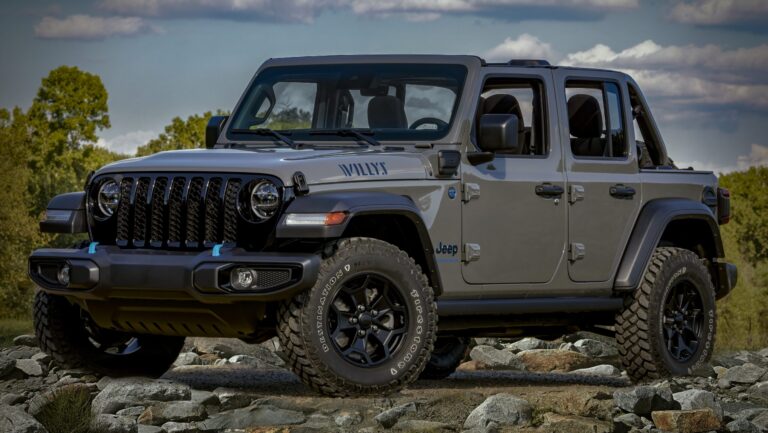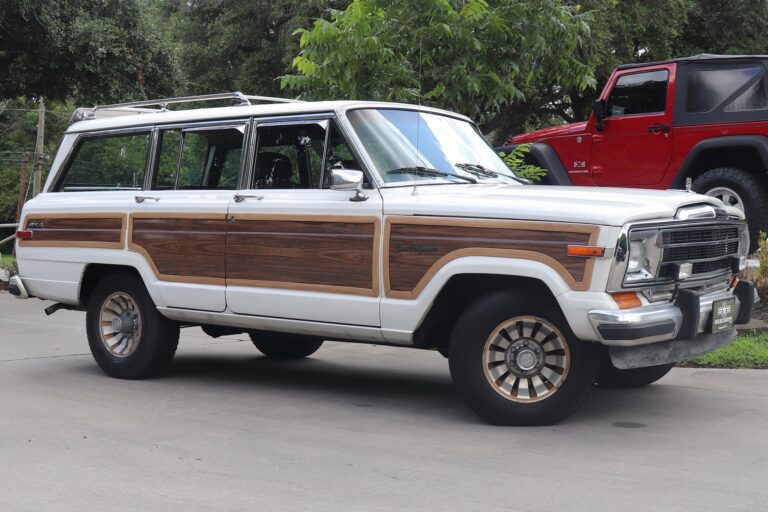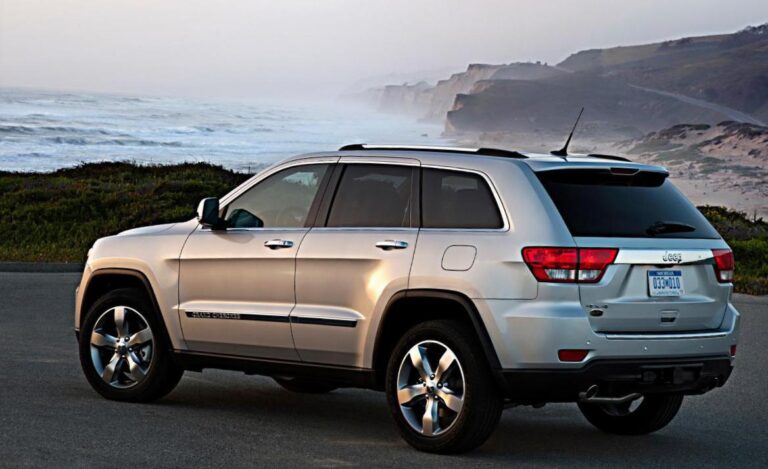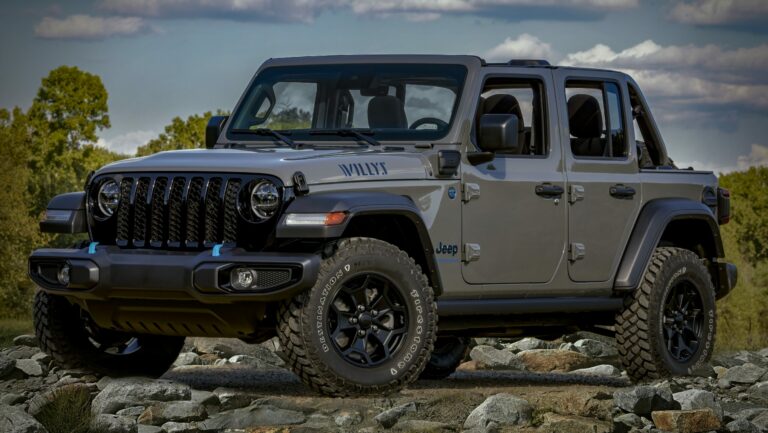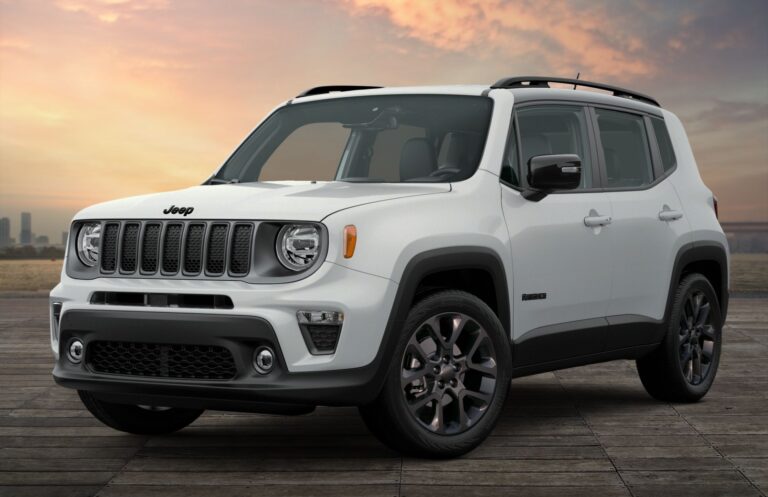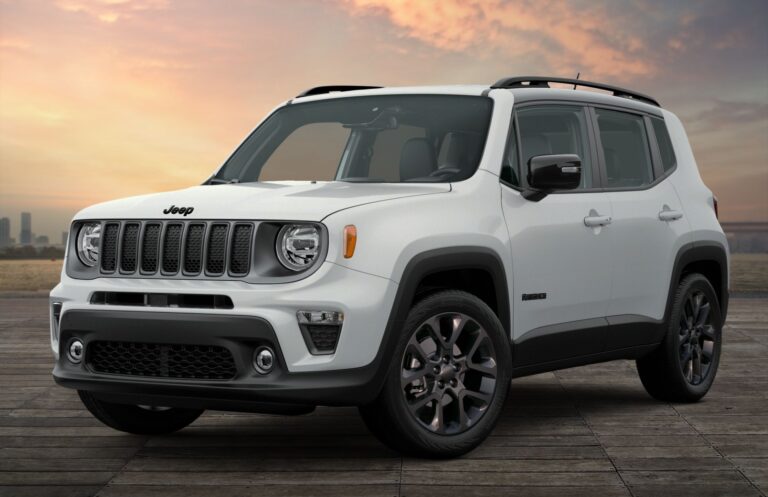How Much It Cost To Lift A Jeep Wrangler: A Comprehensive Guide
How Much It Cost To Lift A Jeep Wrangler: A Comprehensive Guide jeeps.truckstrend.com
For many Jeep Wrangler owners, the desire to lift their vehicle is more than just an aesthetic choice; it’s a gateway to enhanced off-road capability, improved ground clearance, and a more aggressive stance. Lifting a Jeep Wrangler involves modifying its suspension system to raise the body higher off the ground, allowing for larger tires and better articulation over challenging terrain. However, the question that quickly arises for aspiring off-road enthusiasts is: "How much does it cost to lift a Jeep Wrangler?" The answer, unfortunately, isn’t a simple figure. It’s a spectrum influenced by various factors, from the type of lift kit chosen to installation methods and additional necessary upgrades. This comprehensive guide will break down the costs involved, helping you budget effectively for your Jeep’s transformation.
Understanding Lift Kits: Types and Their Impact on Cost
How Much It Cost To Lift A Jeep Wrangler: A Comprehensive Guide
The core of any Jeep lift is the kit itself, and these come in several varieties, each with different price points and performance implications.
-
Spacer Lifts (Budget Boosts):
- Description: These are the most economical option, typically involving polyurethane or aluminum spacers placed above the factory coil springs and/or coil spring isolators. They provide a modest lift (0.75" to 2.5") without replacing major suspension components.
- Cost: $100 – $500.
- Pros: Inexpensive, easy to install, maintains factory ride quality, good for clearing slightly larger tires.
- Cons: Offers minimal performance improvement off-road, can limit suspension travel, primarily for aesthetics.

-
Coil Spring Lifts:

- Description: This type replaces the factory coil springs with longer ones, often paired with new shocks designed for the increased travel. They provide a more substantial lift (2.5" to 3.5") and improve ride quality and off-road performance over spacers.
- Cost: $500 – $2,000.
- Pros: Better performance than spacers, improved articulation, customizable ride quality with different shock options.
- Cons: More involved installation, may require additional components like longer sway bar links or brake lines.

-
Short Arm Lifts:
- Description: Building on coil spring lifts, short arm kits also replace the factory control arms with stronger, longer ones (but still shorter than long arm kits). These kits typically offer 2.5" to 4" of lift and significantly improve articulation and off-road capability by correcting suspension geometry.
- Cost: $1,500 – $3,500.
- Pros: Excellent balance of performance and cost, good for serious off-roading, maintains reasonable street manners.
- Cons: Can put increased stress on control arm mounts at higher lifts, may still require driveshaft upgrades for some models.
-
Long Arm Lifts:
- Description: The pinnacle of suspension lifts, long arm kits replace all eight factory control arms with much longer ones, relocating their frame mounting points. This design provides superior articulation, a smoother ride, and better handling at higher lift heights (4" and above) by reducing the operating angle of the control arms.
- Cost: $3,000 – $7,000+.
- Pros: Unmatched off-road performance, superior ride quality on and off-road, ideal for extreme rock crawling.
- Cons: Very expensive, complex and time-consuming installation (often requiring welding), can reduce ground clearance under the frame where the new control arm mounts are located.
-
Body Lifts:
- Description: Unlike suspension lifts, body lifts use spacers placed between the body and the frame, lifting the body without affecting the suspension. This provides clearance for larger tires without altering ride quality or suspension geometry. Lifts are typically 1" to 3".
- Cost: $100 – $400.
- Pros: Very affordable, simple installation, no impact on suspension geometry or ride quality.
- Cons: Only provides tire clearance, does not improve ground clearance under the axles, can expose frame, may require steering shaft extension or fan shroud modification.
Components Included in a Lift Kit and Their Cost Contribution
The total cost of a lift kit isn’t just the main components. Quality matters, and different kits include varying levels of supporting parts.
- Springs and Shocks: These are the primary components, with price varying based on brand (e.g., Bilstein, Fox, TeraFlex, Old Man Emu) and performance characteristics (e.g., monotube vs. twin-tube, adjustable damping).
- Control Arms: Essential for correcting caster and pinion angles, especially with higher lifts. Adjustable control arms cost more but offer better tuning.
- Track Bars: Front and often rear track bars are needed to re-center the axles after lifting. Adjustable track bars are preferred.
- Sway Bar Links: Longer links are required to maintain proper sway bar function and prevent binding.
- Brake Line Extensions: To accommodate increased suspension droop without stretching or damaging factory lines.
- Bump Stops: Crucial for preventing tire rub and protecting shocks from bottoming out.
- Driveshafts: For lifts 3.5" and above on JK/JL models, aftermarket front and sometimes rear driveshafts may be necessary to prevent vibration or failure due to increased angles. This can add $400 – $1,200 per shaft.
- Correction Brackets/Geometry Correction: Brackets to drop control arm mounting points or relocate axle mounts help restore factory geometry without replacing all control arms, offering a cost-effective solution for moderate lifts.
Labor Costs: DIY vs. Professional Installation
The cost of getting your Jeep lifted is significantly impacted by who does the work.
-
DIY Installation:
- Cost: Primarily the cost of the lift kit and tools.
- Pros: Saves money on labor, rewarding experience, builds mechanical knowledge.
- Cons: Requires mechanical aptitude, proper tools (jack stands, floor jack, torque wrench, impact gun, specialized sockets), can be time-consuming (8-20+ hours depending on kit complexity), risk of mistakes leading to additional costs or safety issues.
- Tools: If you don’t have them, budget an additional $100 – $500+ for essential tools.
-
Professional Installation:
- Cost: Labor rates vary significantly by region and shop, typically $80 – $150+ per hour. A basic spacer lift might take 4-6 hours, while a complex long arm kit could take 15-30+ hours.
- Total Labor Cost: $400 – $3,000+, depending on the lift type and shop rates.
- Pros: Expert installation, saves time and effort, usually comes with a warranty on labor, peace of mind that it’s done correctly and safely.
- Cons: Adds a substantial amount to the overall cost.
Hidden Costs and Unexpected Expenses
The lift kit and installation are just the beginning. Several other costs often arise when lifting a Jeep.
- Larger Tires and Wheels: This is often the primary motivation for a lift. New tires can range from $200 – $600+ per tire, and wheels from $100 – $400+ per wheel. Don’t forget the spare!
- Wheel Alignment: Absolutely crucial after any suspension modification. Expect to pay $80 – $150.
- Gearing Changes: If you install significantly larger tires (e.g., 35" or 37" on a JK/JL with stock 3.21 or 3.73 gears), your Jeep will feel sluggish, and fuel economy will suffer. Re-gearing involves replacing the differential gears in both axles. This is a major expense, costing $1,500 – $3,000+ for parts and labor.
- Fender Flares: To cover wider tires or to allow for even larger tires with less lift, flat or high-clearance fender flares might be desired or necessary. $300 – $1,000+.
- Brake Upgrades: Larger tires put more strain on the braking system. Upgraded pads, rotors, or even a big brake kit might be advisable for safety. $300 – $1,500+.
- Axle Reinforcement/Upgrades: For aggressive off-roading with large tires, stock axles (especially the Dana 30 front axle in some Wranglers) may need reinforcement (gussets, sleeves) or complete replacement (Dana 44 or Dana 60 axles). This can be a very significant cost, from $300 for gussets to $5,000+ for full axle replacements.
- Speedometer Calibration: Larger tires will throw off your speedometer and odometer. A calibration device (e.g., AEV ProCal, Superchips Flashcal) is needed. $150 – $250.
- TPMS Sensors: If you get new wheels, you might need new TPMS sensors or to transfer your old ones. $50 – $100 per sensor.
Factors Influencing the Overall Cost
- Jeep Wrangler Model/Generation: Older models (TJ, YJ) generally have less complex suspension and therefore cheaper kits and installation than newer JK and JL models, which have more sophisticated electronics and components.
- Desired Lift Height: Generally, the higher the lift, the more complex the kit, the more components required, and the higher the cost.
- Quality of Components: Budget-friendly brands exist, but premium brands often offer better materials, engineering, and ride quality, albeit at a higher price.
- Installation Method: DIY vs. professional.
- Geographic Location: Labor rates and parts availability can vary significantly.
Practical Advice for Budgeting Your Lift
- Define Your Goals: Are you lifting for aesthetics, light trails, or extreme rock crawling? Your goals will dictate the type of lift and necessary upgrades.
- Research Thoroughly: Read reviews, watch installation videos, and join online forums specific to your Jeep model. Learn from others’ experiences.
- Prioritize Needs vs. Wants: A basic lift and tires might be all you need initially. Upgrades like re-gearing or axle reinforcements can be done later if your off-roading habits demand them.
- Get Multiple Quotes: If going professional, get quotes from several reputable shops. Ensure the quote is itemized to see exactly what you’re paying for.
- Factor in the "Ripple Effect": Understand that lifting often leads to other necessary or desired upgrades (tires, wheels, re-gearing). Budget for these from the start, even if you plan to do them in phases.
- Don’t Skimp on Safety: If a component is recommended for safety (e.g., driveshaft for higher lifts), don’t skip it to save money. Your safety and the longevity of your Jeep depend on it.
- Consider Used Parts (Cautiously): Some components, like control arms or driveshafts, can be bought used to save money, but always inspect them thoroughly or have a professional do so.
Comprehensive Price Table: How Much It Costs to Lift a Jeep Wrangler
| Item / Service | Description | Estimated Cost Range (USD) | Notes |
|---|---|---|---|
| Lift Kit Type | |||
| Spacer Lift (Budget Boost) | 0.75" – 2.5" lift, retains factory components. | $100 – $500 | Primarily aesthetic/tire clearance. |
| Coil Spring Lift | 2.5" – 3.5" lift, new springs/shocks. | $500 – $2,000 | Improved performance. |
| Short Arm Lift | 2.5" – 4" lift, new springs/shocks/control arms. | $1,500 – $3,500 | Good balance of performance and streetability. |
| Long Arm Lift | 4"+ lift, extensive suspension overhaul, relocation brackets, often welding. | $3,000 – $7,000+ | Superior articulation, complex. |
| Body Lift | 1" – 3" lift, spacers between body and frame. | $100 – $400 | Only for tire clearance, no suspension improvement. |
| Installation Labor | |||
| DIY (Do-It-Yourself) | Your time, existing tools. | $0 | (Excludes tool purchase: $100-$500+) |
| Professional Installation (Shop Labor) | Varies by kit complexity (4-30+ hours @ $80-$150+/hr). | $400 – $3,000+ | Shop rates vary. |
| Additional Required/Recommended Upgrades | |||
| Wheel Alignment | Essential after any suspension modification. | $80 – $150 | Critical for safety and tire wear. |
| Larger Tires (Set of 5) | 33"-37" tires (price per tire $200-$600+). | $1,000 – $3,000+ | Often the main reason for lifting. |
| Aftermarket Wheels (Set of 5) | Required for larger/wider tires or desired look (price per wheel $100-$400+). | $500 – $2,000+ | Ensures proper fitment and backspacing. |
| Driveshaft Upgrade (1 or 2) | For 3.5"+ lifts on some models to prevent vibration/failure. | $400 – $1,200 (per shaft) | Crucial for longevity at higher lifts. |
| Gearing Change (Front & Rear Axles) | Recommended for 35"+ tires to restore performance/MPG. | $1,500 – $3,000+ | Significant performance improvement. |
| Speedometer Calibration | Required to correct speedometer/odometer readings. | $150 – $250 | Small device plugs into OBD-II port. |
| TPMS Sensors (if new wheels) | If new wheels don’t come with them, or old ones are incompatible. | $200 – $400 (for 5) | Essential for tire pressure monitoring. |
| Fender Flares (Flat/High-Clearance) | To cover wider tires or allow more articulation. | $300 – $1,000+ | Aesthetic or functional upgrade. |
| Brake Upgrades (Pads/Rotors/Big Brake Kit) | Recommended for larger tires due to increased stopping distance. | $300 – $1,500+ | Important safety consideration. |
| Axle Reinforcement (Gussets/Sleeves) | Recommended for aggressive off-roading with large tires on stock axles. | $300 – $800 | Prevents bending/breaking of axle components. |
| Potential Total Cost Range | (Considering common scenarios from mild to wild) | ||
| Basic Spacer Lift + Tires/Wheels + Alignment | $1,500 – $3,500 | Entry-level. | |
| Quality Coil/Short Arm Lift + Tires/Wheels + All Basics | $4,000 – $8,000 | Common mid-range setup. | |
| High-End Long Arm Lift + Large Tires/Wheels + All Upgrades | $8,000 – $15,000+ | For serious off-road enthusiasts. |
Note: These are estimated ranges and can fluctuate based on brand, quality, geographic location, and specific Jeep model.
Frequently Asked Questions (FAQ)
Q1: Do I need new tires and wheels after lifting my Jeep?
A1: While not strictly required for every lift (especially smaller ones), the primary reason most people lift their Jeep is to fit larger tires. Larger tires often require new wheels with different backspacing to prevent rubbing. It’s a significant additional cost but typically desired.
Q2: Will lifting my Jeep void my warranty?
A2: Generally, no. The Magnuson-Moss Warranty Act protects consumers from warranties being voided due to aftermarket parts unless the dealer can prove the aftermarket part directly caused the failure. However, a dealer might deny a warranty claim on suspension components if they believe the lift kit caused the issue. It’s always best to check with your dealership.
Q3: What’s the "best" lift height for a Jeep Wrangler?
A3: There’s no single "best" height. It depends on your goals. 2.5" to 3.5" is popular for daily drivers that also see off-road action, as it usually doesn’t require extensive additional modifications like driveshafts or re-gearing. Taller lifts (4"+) offer maximum clearance but come with significantly higher costs and complexity.
Q4: How long does it take to install a lift kit?
A4: For DIY, a basic spacer lift might take 4-8 hours. A full coil spring or short arm lift could take 8-16 hours. Long arm kits can take 20-30+ hours, often involving cutting and welding. Professionally, these times are often similar or slightly less, depending on the shop’s efficiency.
Q5: Do I need to re-gear my Jeep after lifting?
A5: Not directly because of the lift, but because of the larger tires that usually accompany a lift. If you go significantly larger than stock (e.g., 35" or 37" tires), re-gearing is highly recommended to restore performance, fuel economy, and reduce strain on the drivetrain.
Q6: What is the most important thing to consider when choosing a lift kit?
A6: Your intended use and budget. Don’t overspend on a high-end lift if you only plan on light trail use. Conversely, don’t cheap out on a lift if you’re serious about aggressive off-roading, as it could lead to poor performance, breakage, or safety issues.
Conclusion
Lifting a Jeep Wrangler is an exciting and transformative modification, unlocking new levels of capability and presence. However, it’s crucial to approach it with a clear understanding of the financial commitment involved. From the initial cost of the lift kit itself, which can range from a few hundred to several thousand dollars, to the significant expenses of professional installation, larger tires, wheels, and potentially crucial drivetrain upgrades like driveshafts and re-gearing, the total investment can easily climb into the thousands.
By thoroughly researching your options, setting a realistic budget, and considering all potential hidden costs, you can embark on your Jeep lifting journey with confidence. Whether you opt for a subtle spacer lift or a comprehensive long arm system, remember that the goal is to enhance your Jeep’s performance and appearance safely and effectively, allowing you to conquer new trails and enjoy the unique freedom that only a lifted Wrangler can offer.


